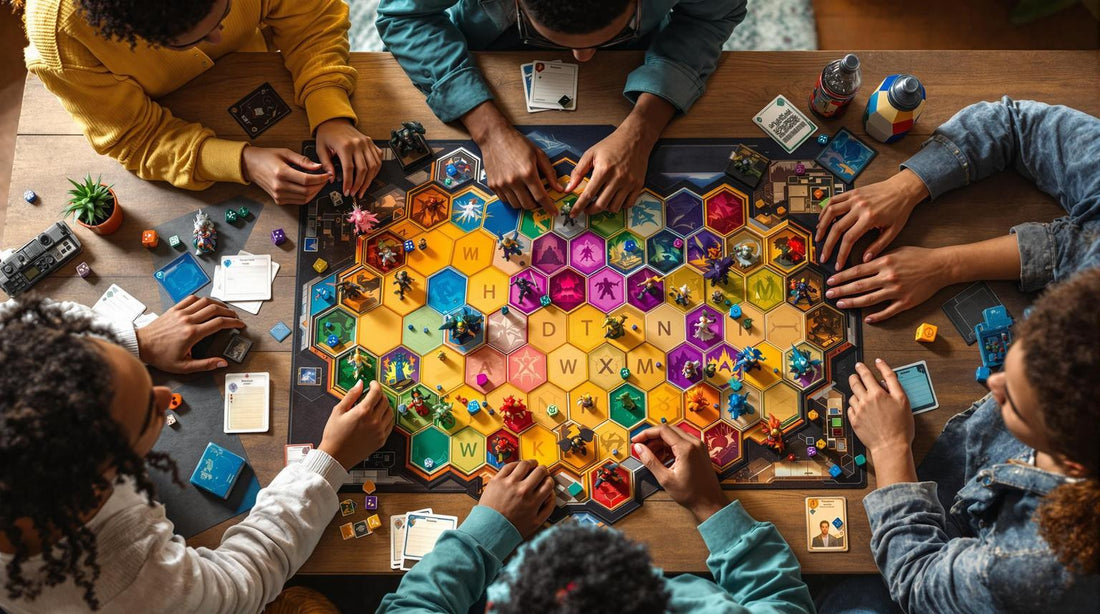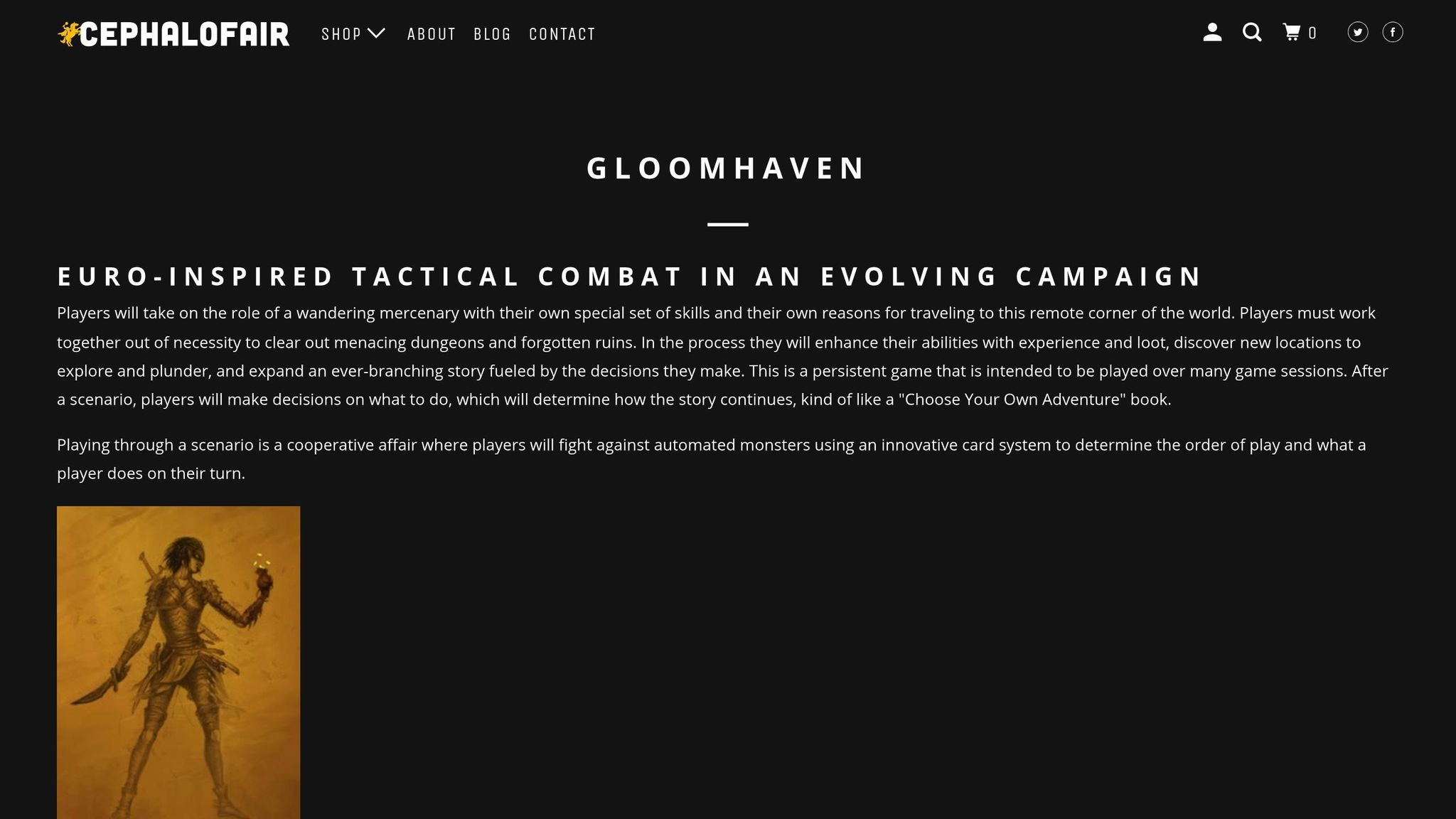Discover the Best Board Games for Every Player

Scaling Difficulty by Player Count in Co-op Games
Scaling difficulty in co-op games ensures fair and engaging gameplay, whether you're playing solo or in a group. Without proper scaling, games can feel too easy with more players or too hard with fewer. Developers use two main methods:
- Active Difficulty Adjustments: Real-time changes based on player performance (e.g., Left 4 Dead's AI Director).
- Pre-set Difficulty Rules: Fixed formulas for consistent scaling (e.g., Gloomhaven's monster level formula).
Both approaches have pros and cons. Active adjustments offer dynamic gameplay but can vary between sessions. Pre-set rules are predictable and easier to plan around but lack adaptability.
Quick Comparison
| Feature | Active Adjustments | Pre-set Rules |
|---|---|---|
| Adaptability | Changes dynamically | Fixed scaling |
| Consistency | Varies between sessions | Same experience each time |
| Implementation | Requires algorithms | Uses simple formulas |
| Player Experience | Dynamic and unpredictable | Predictable and strategic |
Games like Pandemic, Deep Rock Galactic, and Spirit Island showcase how scaling keeps gameplay balanced and fun for all group sizes. Whether you're a solo player or part of a team, good scaling enhances replayability and challenges.
Difficulty Scaling in Cooperative Games
How Games Scale Difficulty
Game designers typically use two main strategies to adjust cooperative games for different numbers of players: active difficulty adjustments and pre-set difficulty rules. Each method helps ensure the gameplay stays engaging and balanced.
Active Difficulty Adjustments
This approach tweaks game elements in real time based on player performance and team size. Algorithms track player actions and adjust challenges dynamically to match the team's capabilities.
For instance, Left 4 Dead uses an "AI Director" to monitor team performance. It adjusts enemy spawns and places health items strategically to keep the game engaging. While this creates a more dynamic experience, it can also lead to varying levels of difficulty between play sessions.
Pre-set Difficulty Rules
Pre-set rules rely on fixed formulas to scale game elements according to the number of players. This method ensures consistent experiences across different playthroughs, making it easier for players to plan their strategies.
For example, Gloomhaven determines monster levels with a simple formula: (average character level / 2, rounded up). This predictable system allows players to anticipate and prepare for challenges.
Comparing Active and Pre-set Systems
| Feature | Active Adjustments | Pre-set Rules |
|---|---|---|
| Adaptability | Changes based on player actions | Fixed scaling by player count |
| Consistency | Varies between sessions | Same experience every time |
| Implementation | Requires advanced algorithms | Uses straightforward formulas |
| Player Experience | Dynamic and unpredictable | Predictable and strategic |
Digital games often lean toward active adjustments because they can handle real-time processing, while board games tend to use pre-set rules due to their simplicity. A survey of 100 popular co-op board games revealed that 62% use pre-set scaling rules, 28% use active adjustments, and 10% combine both approaches.
Scaling in Popular Co-op Games
These well-known games illustrate how different scaling methods are applied in real-world settings:
Pandemic's Outbreak System
Pandemic uses a card-based system to adjust difficulty as the number of players changes. The game increases the challenge by adding more epidemic cards to the deck. For example, a 2-player game might include 4 epidemic cards, while a 4-player game could have 6 or 7. On top of that, 4-player games start with just 2 cards per player instead of 3, which forces players to carefully coordinate their resources. This system highlights how fixed rules can effectively ramp up the tension.
Deep Rock Galactic's Team Scaling

Deep Rock Galactic adjusts difficulty by modifying several key elements based on the number of players:
| Parameter | Solo Play | 4-Player Adjustment |
|---|---|---|
| Enemy Health | Base value | 300% increase |
| Enemy Count | Standard spawns | 3x more enemies |
| Resource Distribution | Normal | Adjusted proportionally |
| Special Enemy Frequency | Low | Much higher |
This game leans on active scaling, where changes happen dynamically during gameplay, contrasting with fixed systems like Pandemic's.
Scaling in Gloomhaven and Left 4 Dead

Gloomhaven relies on detailed mathematical tweaks to scale difficulty:
- Trap damage increases by 2 for every 2 levels of scenario difficulty.
Meanwhile, Left 4 Dead uses its AI Director to make real-time adjustments. It modifies enemy spawns and resource placements based on both the number of players and their performance.
These examples showcase how different games handle scaling, from pre-set rules to dynamic adjustments, ensuring a balanced challenge for players of all group sizes.
sbb-itb-1ed942f
How to Create Good Scaling Systems
Developers can take inspiration from successful games to create systems that scale effectively. Here are a few key principles to keep in mind:
Focus on Solo Play First
A well-designed scaling system should maintain the balance between challenge and cooperation, even for solo players. Interestingly, 72% of designers cite balancing for different player counts as their biggest hurdle.
Take Spirit Island as an example. This game adjusts invader actions while keeping the depth of solo strategies intact.
Use Non-Linear Difficulty Adjustments
Linear difficulty increases - like simply adding more enemies - can feel predictable. Instead, aim for non-linear scaling by tweaking multiple factors. For instance, Pandemic adjusts card mechanics to create more dynamic challenges.
Similarly, Chronicles of Crime uses an app to change clue complexity based on the number of players, making the game feel balanced and engaging.
Combine Multiple Scaling Techniques
Balanced cooperative gameplay often requires mixing different methods. Consider these approaches:
- Adjusting AI behavior dynamically
- Scaling resources based on player count
- Varying scenario complexity
- Introducing flexible time constraints
Pro Tip: Focus on mechanics that encourage teamwork and coordinated decision-making. Avoid relying solely on numerical adjustments, as this keeps the experience engaging for all group sizes.
Where to Buy Scaled Co-op Games
Once you understand how scaling systems work, the next step is finding cooperative games that implement them effectively. To do this, you’ll need to shop strategically. Stores like Brain Games specialize in titles that work well across different group sizes.
Shop at Brain Games

Brain Games curates a selection of cooperative games designed with flexible scaling systems. Their staff is experienced in helping customers find games that fit specific player counts. If you're near the Baltic states, you can even visit their physical stores to try out games in person.
Here are a few other trusted options for buying scaled co-op games:
| Retailer | Focus Areas | Key Features |
|---|---|---|
| BoardGameGeek Store | Community-driven picks | User ratings & reviews |
| Miniature Market | Large inventory, low prices | Competitive pricing |
Pro Tip: Before buying, check scaling mechanics on BoardGameGeek.com. This ensures the game's difficulty adjustments align with your group's needs.
For tailored advice, visit your local game shop (LGS). Staff often have deep knowledge and can recommend games based on your group size and experience level.
Budget-Friendly Ideas:
- Look for card-based games, which often scale naturally.
- Search for used copies of popular games like Spirit Island.
- Try print-and-play games with adjustable rules.
Choosing games with thoughtful scaling systems can save you money by making one game work well for various group sizes.
Summary
Effective scaling systems combine active adjustments with pre-set rules to keep gameplay balanced across different player counts. When done correctly, these systems meet players' expectations, leading to 30% higher replay rates.
Well-designed systems maintain tension and fairness by adjusting resources, threats, and objectives strategically. This careful tuning ensures cooperative games stay challenging and engaging, no matter the group size.
The best examples show that thoughtful scaling can adapt challenges to player count without losing the essence of the core gameplay. These systems use formulas to maintain strategic depth while making proportional adjustments.
FAQs
How to make a co-op game balanced?
Balancing a co-op game requires careful adjustments to ensure the experience feels fair and engaging for all players. Here are some key strategies:
Test Core Mechanics Across Player Counts
Playtest the game with different numbers of players to see how strategies and mechanics perform. This helps ensure the game feels consistent and enjoyable no matter the group size.
Tweak One Element at a Time
Make changes step by step to understand their effects. This approach allows you to:
- Pinpoint the impact of each adjustment
- Keep a clear record of changes
- Easily undo tweaks that don't work as intended
Adapt for Different Player Counts
Scaling difficulty for various group sizes can involve:
- Adjusting the action economy (e.g., limiting or expanding player actions)
- Modifying resources based on how many people are playing
Use Mathematical Scaling
Apply math-based methods to balance the game fairly:
- Model how resources are distributed
- Use formulas to scale threats and allocate resources appropriately
Steer Clear of Common Mistakes
Avoid these frequent errors when balancing co-op games:
- Overcomplicating the math behind the balance
- Ignoring how group synergy affects gameplay
- Keeping difficulty too static as the game progresses
The goal is to create a game that keeps players engaged and challenged, no matter the size of the group, while staying true to the core gameplay.






